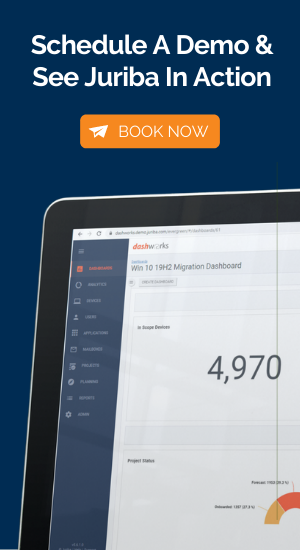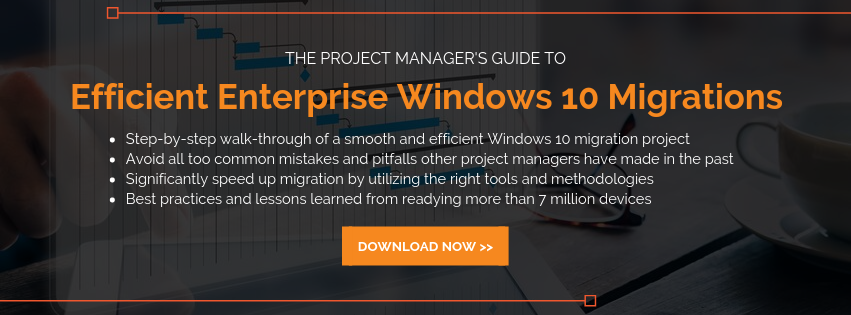In the hustle and bustle of a major enterprise-wide migration, be it Windows 10, Office 365 or other end-user facing upgrades, it is easy to get lost in the hundreds of to-dos and forget about the end-user. But the success of your project hinges significantly on the end-user adoption and often your end-users will have mixed feelings about a "forced" migration. These migrations can be something that is done to them, not with them. Thankfully, there are easy ways to improve user adoption and perception by communicating early and often, training your end-users sufficiently and getting influencers on board early.

Why End-User Training After A Migration Is Important
End-user training plays a vital role to get users acquainted with the new UI and features, but also calm any anxiety and negative feelings users might have. For example, some employees might be excited about the prospect to finally have a machine that runs Windows 10, but others might be anxious about what to expect (e.g., where will I find my apps, how will the Start menu change, etc.) once the migration is through. Post-migration training will alleviate a lot of this anxiety—especially if you decide to have floor walkers who talk to each user, make sure they can log in and answer any immediate concerns the user might have.
Another reason is user satisfaction. If your user finds everything quickly and knows how to use it, they are more likely to have positive feelings associated with the upgrade. It is crucial to manage expectations (when will the migration be rolled out, how will the training be done, what do I do if I have a problem, etc.) and communicate these early and often.
Different Types Of Training
In order to choose the right training for your organization, you must consider the amount and kind of changes because that will determine the amount of training needed to achieve familiarization. The more changes, the more training—which is obvious, but nevertheless bears repeating. Which method you choose really depends on your organization and the amount of changes the user will face.
There are different ways to familiarize your users with the new user interface and functionality, for example:
- Email Communication. Communication is crucial. Use automated email communication before and after the migration to inform the user of when the migration will be happening, what changes to expect and what training will be available.
- Simple Dropsheets. If the changes are minimal, simple dropsheets will do. They outline what the desktop will look like and how to perform the same functions, so users don’t get lost in the new user interface.
- Video Training. A more sophisticated approach to training provides users with bite-size videos that train them on the top ten changes. This does not have to be complicated. A support engineer can simply run through the changes and record himself.
- Face to face training. Only very few companies still hold face-to-face training due to the cost and effort involved in an enterprise setting, but in smaller settings or in departments that require special training, this might be an effective way.
- Self-guided training. The user can use the help desk knowledge tool as well as help articles or a guided tour (leveraging intuitive tools like WalkMe)
Depending on the migration, a combination of training methods might be needed. You also need to ensure that users are able to log in to access the training. For example, you might have a large remote workforce that used to log in through VPN. Now, after the migration, they may have to log in using Citrix. If they ignore your pre-migration emails, they will not be able to connect to any post-migration communication.
Conclusion
No matter which kind of training method you choose, we always advise using problem ticket analysis and end-user surveys to keep a tab on what is going on in your user base post-migration. This way, you can identify as early as in the pilot phase any user experience issues before they roll out to the remainder of your organization.


